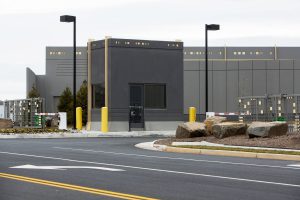Thoughts on Recent Cloud Computing Innovation


It is most agreed upon that Amazon is the current leader in cloud computing technology. AWS holds almost half the world’s market share in public cloud computing infrastructure. What supports that technology is a robust physical network of interconnected data centers. These data centers rival Amazon’s well known distribution centers in physical size and ambition, they are spread all over the United States.
While a company can compete, and facilitiate cloud computing through innovative, user friendly, and feature rich technology, these aspects pale by comparison to the importance of having a physical infrastructure backbone. In this regard, this is what sets Amazon apart.
Having worked for a construction firm for almost three years, what has been most apparent, at least in the mid-atlantic region, is how much heavy civil contractors have had to divide their recources to compete for traditional heavy civil contracts such as roads and bridges, to new and industry unique contracts like those that require site work for data centers and distribution warehouses. Though I have seen work being contracted out for Google and Microsoft data centers, it seems like the most common sighting in the mid-atlantic is to see a contract for an Amazon Fulfillment Center, or for a massive data center, almost garunteed to be used to support AWS. I think this is what sets Amazon apart from competators like Google, Microsoft and IBM. What sets them apart is from what I have seen, an aggressive, almost imperialistic corporate expansion accross the United States.
Amazon currently has around 72 availabilty zones. Within these zones, firms can set security limitations based on geography as well as garuntee that their data is secure due to a diverse geographic spread of data backups. Within these zones, the more data centers, the more likely a firm will be physically close to it’s data. This insures high latency. Amazon’s rush to build these data centers has so far supported this. It is with this corporate infrastructure integration that Amazon can also offer cheaper, faster and more secure cloud storage solutions to firms.
On a related note, security has also set Amazon apart from it’s competition. In a physical sense, it has proven that it can better hide it’s data from potential malicious actors. As described before, redundancy in data backups and geographic spread of infrastructure is essential to Amazon’s success. With that being said, a serious breach to a data center can be costly in both hard capital and corporate reputation. It is for this reason that Amazon tries to keep it’s data centers physically secure and hidden. To reduce the likelyhood of human error and susceptibility to social engineering attack, Amazon keeps it’s data centers hidden, difficult to access, maintained by as few humans as possible, and monitored by intense security.
I have seen this in practice also, Amazon likes to keep a low profile. It’s locations are never advertised, and in contruction refered to only by code names. They are surrounded by large covered fencing and monitored at gates by security. They are often located in unexpected places. Behind fields, or next to aging residential neighborhoods in far away subburbs.
It is a combination of wide spread physical infrastrucutre throughout the US and the world, as well as a focus on intense physical security of this infrastructre that has allowed Amazon to continuosly consume market share. These are two very important features of Amazon’s cloud computing business model, that allow them to provide cheap, secure, fast and widespread access to cloud resources.
Bibliography:
Page, V. (2020, August 28). What is Amazon web services and Why is it so successful? Retrieved April 22, 2021, from https://www.investopedia.com/articles/investing/011316/what-amazon-web-services-and-why-it-so-successful.asp
Swinhoe, D. (2021, April 01). AWS Rockfish: Planning documents reveal three Amazon data centers in Texas. Retrieved April 22, 2021, from https://www.datacenterdynamics.com/en/news/aws-rockfish-planning-documents-reveal-three-amazon-data-centers-in-texas/

